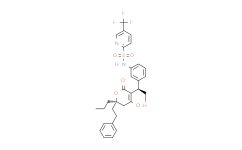174484-41-4,替拉那韦,Tipranavir,Medlife,上海现货。
Medlife,致力于提供高品质、高性价比小分子化合物的产品。
Medlife小分子化合物大量库存,提供超过2万种的抑制剂、激动剂、拮抗剂等产品,是药物及疾病研究的重要原料供应商。
HIV蛋白酶抑制剂,Tipranavir 有效抑制 HIV-1 蛋白酶 酶活性和二聚化,对抗多种蛋白酶抑制剂(PI)的HIV-1分离株具有有效的活性,IC50 为 66-410 nM。
查询关键词:“174484-41-4,替拉那韦,Tipranavir,PC15647,Medlife,上海现货”。



 扫码关注公众号
扫码关注公众号